Bringing home a brand new kitty is so exciting. Whether adopting, buying from a breeder, or picking up a kitten from a free litter, your new family member will surely bring you joy and happiness. However, you have to find a suitable name. So, where should you start? If you are a science buff, there are several selections you can make in this category that would be unique and fitting. Here are 180 scientific names for your new kitty.

How to Name Your Cat
Naming your cat can be challenging and exciting at the same time. So, what is a good way to pick your cat’s name? You probably already have a couple of options you’ve been mulling over, but you can’t pick the one that fits them best. Don’t worry, sometimes, we all need a little inspiration.
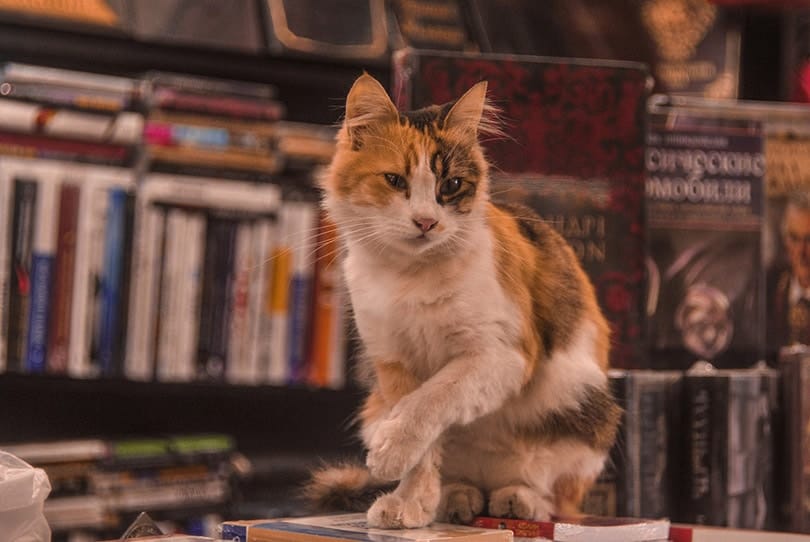
Pick at Random
You could always let fate decide for you. Just put your favorites in a hat or whatever you choose. You can draw a name and call it a day.
Personality Fit
Naming your cat based on their personality is one of the best ways to go about it. Sometimes, specific names just fit like a glove. Test out a few and see what works!
Pick a Sentimental Favorite
If you can’t decide, name your cat after your favorite scientific innovator or science-related subject matter.
In the Name of Science
We scoured the web and put our heads together to come up with terrific scientific names we think you’ll love. Check them out!
Great Inventors of the Past
We wouldn’t be where we are today without the world’s great inventors. You might not be familiar with every inventor, but some of them have pretty cool names. And they did some pretty amazing things.
Male Cat Names
- Edison—Thomas Edison
- Graham Bell—Alexander Graham Bell
- Henry—Henry Ford
- Franklin—Benjamin Franklin
- Eli—Eli Whitney
- Archimedes—Archimedes
- Babbage—Charles Babbage
- Morse—Samuel Morse
- Gutenburg—Johannes Gutenbyrg
- Jefferson—Thomas Jefferson
- Logie—John Logie Baird
- Galileo—Galileo
- Vitaly—Vitaly Abalakov
- Guido—Guido of Arezzo
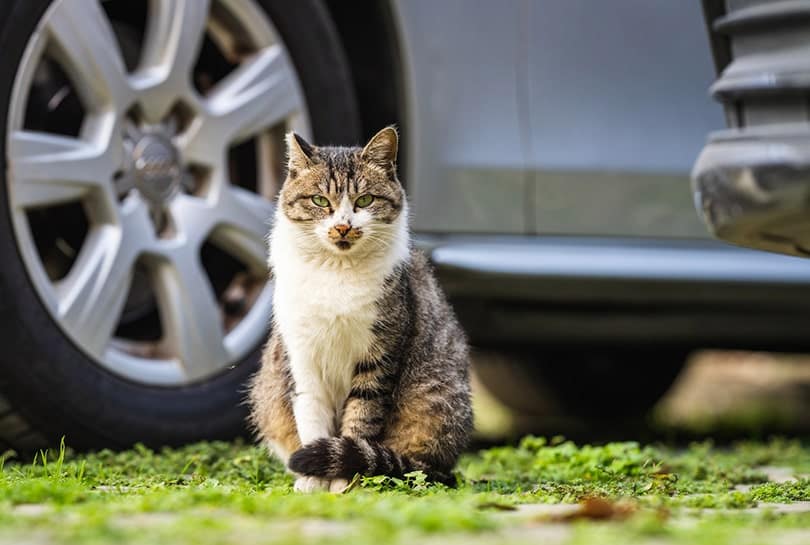
Female Cat Names
- Marian—Marian Croak
- Margaret—Margaret E. Knight
- Beasley—Maria E. Beasley
- Hedy—Hedy Lemarr
- Josephine—Josephine Cochrane
- Melitta—Melitta Bentz
- Beulah—Beulah Louise Henry
- Sarah—Sarah Boone
- Florence—Florence Parpart
- Patricia—Patricia Bath
- Magie—Lizzie Magie
- Ellen—Ellen Egin
- Caresse—Caresse Crosby
- Esther—Esther Takeuchi
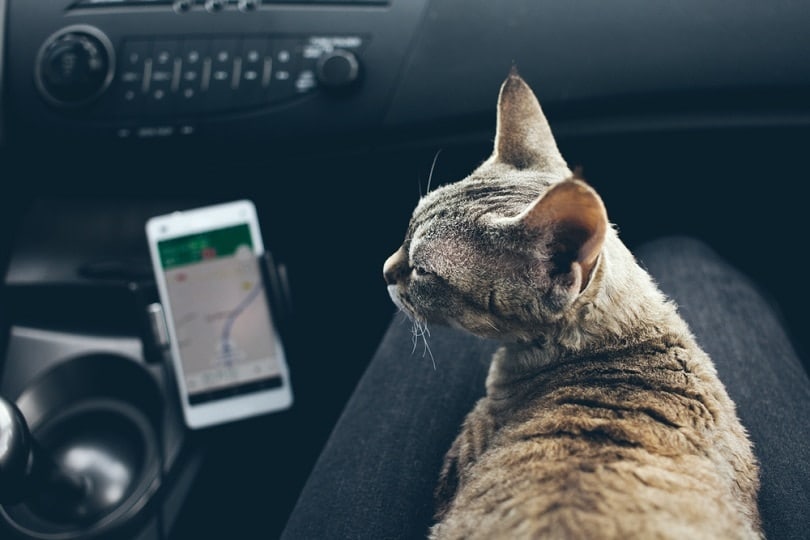
Famous Scientific Researchers
Thanks to the ongoing research and service scientific researchers have put in through the years, several of the world’s mysteries have been solved. You could honor your favorite researcher by naming your kitty after their works of genius.
Male Cat Names
- Einstein—Albert Einstein
- Darwin—Charles Darwin
- Tesla—Nikola Tesla
- Hawking—Steven Hawking
- Copernicus—Nicolaus Copernicus
- Aristotle—Aristotle
- Bohr—Neils Bohr

Female Cat Names
- Rosalind—Rosalind Franklin
- Marie—Marie Curie
- Barbara—Barbara McClintock
- Rita—Rita Levi Montalcini
- Ada—Ada Lovelace
- Lise—Lise Meitner
- Wu—Chien-Shiung Wu
- Doudna—Jennifer Doudna

Science on TV
Whether you’re talking fiction or nonfiction, there are plenty of science buffs on TV, too. You could name them after a type of scientist on your favorite show or go with a classic.
Male Cat Names
- Nye—Bill Nye
- Beakman—Beakman’s World
- Sid—Sid the Science Kid
- deGrasse—Neil deGrasse Tyson
- Dr. Emmet Brown—Back to the Future
- Dr. Frankenstein—Frankenstein
- Strangeglove—Dr. Strangeglove
- Rotwang—Metropolis
- Walter—Breaking Bad
- Wu—Jurassic Park
- Farnsworth—Futurama
- Szalinski—Honey, I Shrunk the Kids
- Ross—Friends
- Jimmy Neutron—Jimmy Neutron, Boy Genius
- Dexter—Dexter’s Laboratory
- Pinky—Pinky & the Brain
- Bruce—The Incredible Hulk
- The Professor—Gilligan’s Island
- Wall-E—Wall-E
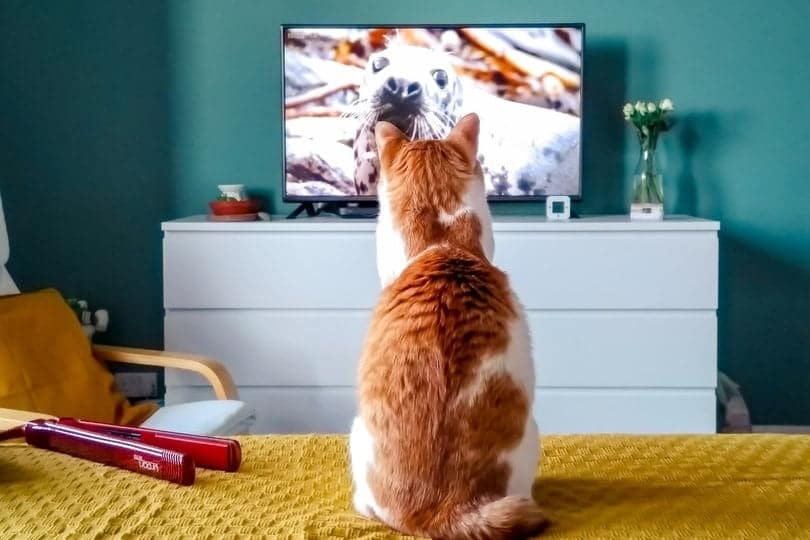
Female Cat Names
- Miss Frizzle—The Magic School Bus
- Scully—X-Files
- Jane—Thor: Dark World
- Keough—Outbreak
- Gwen—Gwen Stacy
- Jo—Twister
- Stone—Gravity
- Lily—Chain Reaction
- Marta—The Bourne Legacy
- Helen—The Day the Earth Stood Still
- Charlie—Top Gun
- Sarah—The Lost World: Jurassic Park
- Emma—The Saint
- Bindi—Bindi the Jungle Girl
- Sue Storm—The Fantastic Four
- Ellie—Jurassic Park
- Susan—Robot
- Mears—Contagion
- Amelia—Interstellar
- Grace—Avatar
- Fossey—Gorillas in the Mist
- Peggy—Captain America: The First Avenger
- Arroway—Contact
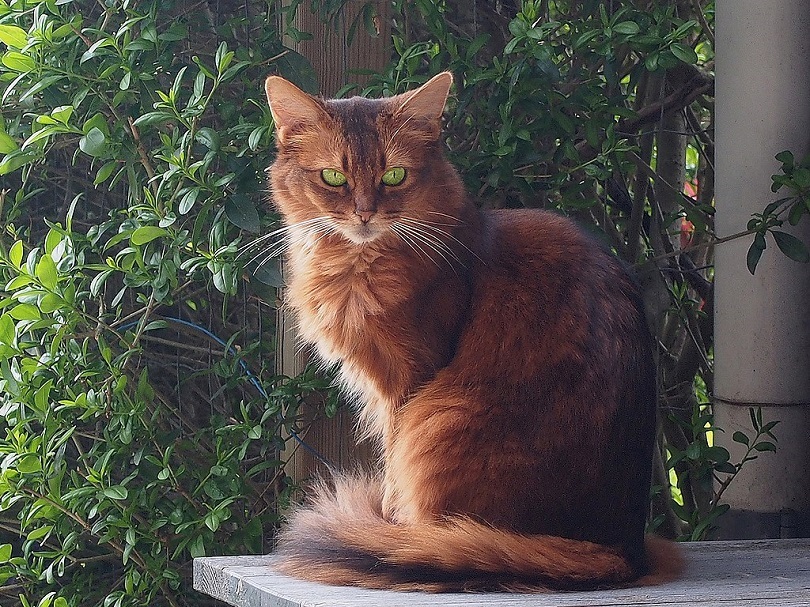
Famous Mathematicians
We all know that math and science go hand in hand. Are there any mathematical geniuses that you could name your cat after?
Male Cat Names
- Newton—Isaac Newton
- Euclid—Euclid of Alexandria
- Pythagoras—Pythagoras of Samos
- Archimedes—Archimedes of Syracuse
- Magnus—Albertus Magnus
- Alexander—Alexander Grothendieck
- Carl—Carl Gauss
- Leonhard—Leonhard Euler
- Arthur—Arthur Caley
- Hilbert—David Hilbert
- Riemann—Bernhard Riemann
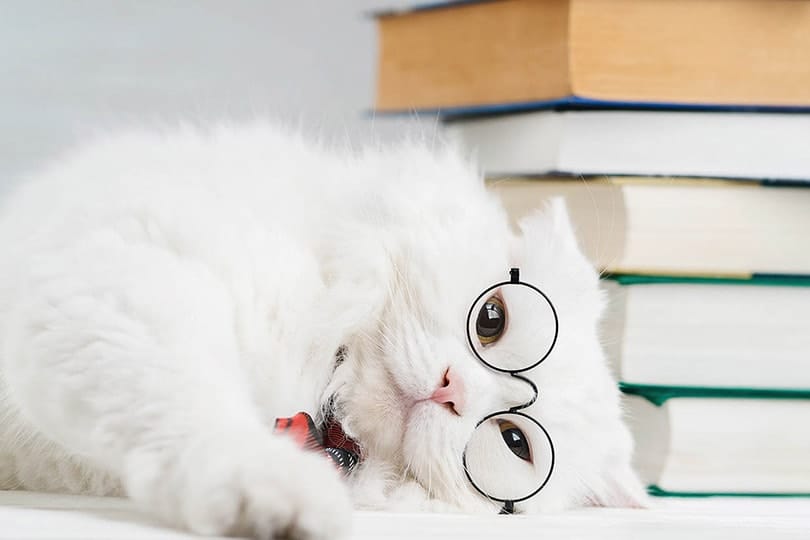
Female Cat Names
- Ada—Ada Lovelace
- Emmy—Emmy Noether
- Sophie—Sophie Germain
- Hypatia—Hypatia
- Sofya—Sofya Kovalevskaya
- Majorie—Majorie Lee Browne
- Ingrid—Ingrid Daubechies
- Euphemia—Euphemia Haynes
- Dorothy—Dorothy Vaughn
- Evelyn—Evelyn Boyd Granville
- Phillipa—Phillipa Fawcett
- Daina—Daina Taimina
Science-Related Words
Rather than naming them after a person, there are plenty of excellent words relating to nature, space, chemical compounds, and other words in science.
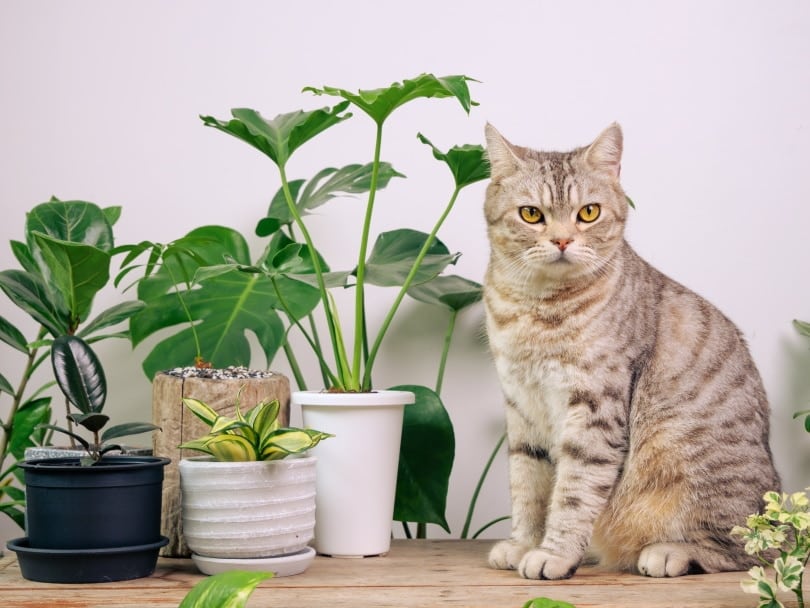
- Beaker
- Everest
- Permafrost
- Botany
- Celsius
- Fahrenheit
- Zinc
- Compound
- Molecule
- Atom
- Chemist
- Alchemy
- Robot
- Pi
- Cortex
- Quantum
- Bunsen
- Flask
- Pipette
- Petri
- Thermos
- Graphite
- Nimbus
- Cirrus
- Cumulus
- Fossil
- Darwin
- Cuvette
- Data
- Gibbous
- Syzygy
- Penumbra
- Magnet
- Arctic
Space-Related Science Names
Here are some space-related words you can use for your kitty if you are so inclined. We think they would be interesting at the very least and pretty cool in the best-case scenario! If you’re looking for a conversation starter, start with these unisex names that work for boys or girls!

- Comet
- Cosmo
- Constellation
- Sputnik
- Nasa
- Orbit
- Orion
- Andromeda
- Draco
- Jupiter
- Cassiopeia
- Nova
- Aries
- Sirius
- Moon
- Neptune
- Halley
- Celeste
- Oberon
- Star
- Janus
- Mercury
- Juno
- Luna
- Eclipse
- Light Year
- Pluto
- Alien
- Fractal
- Plasma
- Wandflower
- Jaxa
- Density
- Soyuz
- Asteroid
- Galaxy
- Phobos
- Echo
Final Thoughts
We hope we’ve given you science junkies plenty to think about! We certainly had fun compiling a list of creative ideas you can use. If you love some of the names on this list but can’t decide, remember to think about how you will name your kitty. We have complete confidence that you will pick the best scientific name of all, and it will fit your cat like a glove, hopefully like the one they’ll be wearing for midnight experiments.
Related Read:
- 400+ Cat Names That Start With A: Ideas For Your Cute & Sophisticated Pet
- 300+ Male Cat Names: The Ultimate List of Masculine, Adorable & Tough Options
Featured Image Credit: FotoYakov, Shutterstock















